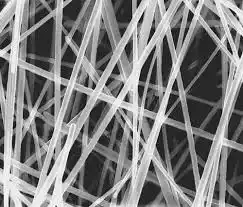افشین رشید
اُستادیار ؛ عضو هیات علمی دانشگاه آزاد اسلامی واحد علوم و تحقیقات تهران
615 یادداشت منتشر شده(Function of nanowires in Nano biochips (Nano bio chip

Note: Nanobiochips consist of an array of silicon nanowires densely packed onto a small chip designed with nickel electrode leads and coated with silica. The nanowires disperse without damaging cells and are sensitive enough to measure small potential changes, as small as a fraction or a few millivolts.
Another feature of nanowires in nanobiochips is that they can separate the electrical signal measured by each individual nanowire. Nanowires are. Generally, a wire is a structure that is extended in one direction (longitudinal direction) and is very restricted in the other two directions. A fundamental property of these structures, which have two outputs, is electrical conductivity. By applying an electric potential difference at the two ends of these structures and along their length, electrical charge transfer occurs. The construction of wires in nanometer dimensions is of great interest both technologically and scientifically, because they exhibit unusual properties in nanometer dimensions. The length-to-diameter ratio of nanowires is very high.

Silicon nanowires are most commonly used in nanobiochips. This type of nanowires is not toxic and does not harm cells. This type of nanowires has shown its greatest use in the medical field, such as detecting signs of cancer, stem cell growth, etc. The human body, like a computer, must have sensors that can warn external warning devices in the event of a problem or error or the presence of toxic substances and try to fix it. Just like a computer that gives an (ERROR) message if you follow a wrong path or a virus is found in it. They produce flexible and long nanowires, the variable lengths of these nanowires are between 1 and 100 nm or even in millimeters, and in comparison, they are about a thousand times thinner than a human hair. The length, flexibility and strength of these nanowires give them special properties. For example, being thin and long increases its surface area. Therefore, these structures can be used in the design of very fast and sensitive sensors. These nanowires have the ability to produce invisible ultraviolet rays, light enters the nanowire from one end and starts to radiate from the other end. The nanowires effectively pass this light without any loss. And if it encounters a pathogen or toxic substance on its way, the nanowire starts to radiate and creates a very fast warning system, and this can detect the disease earlier and faster than any test.
Conclusion :
Nanobiochips consist of an array of silicon nanowires densely packed onto a small chip designed with nickel electrode leads and coated with silica. The nanowires disperse without damaging cells and are sensitive enough to measure small potential changes, as small as a fraction or a few millivolts.